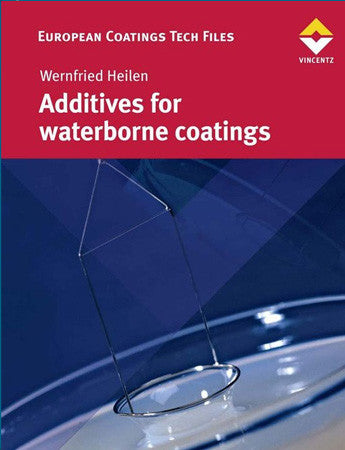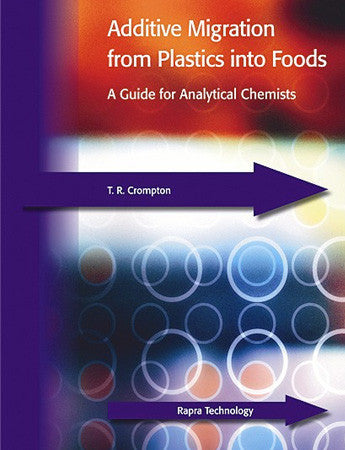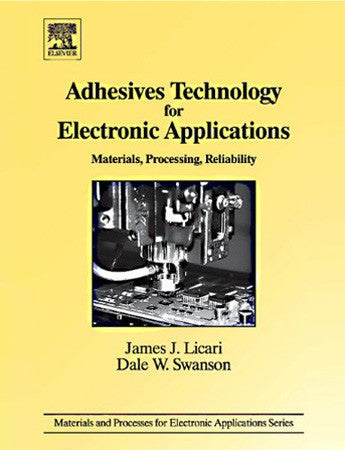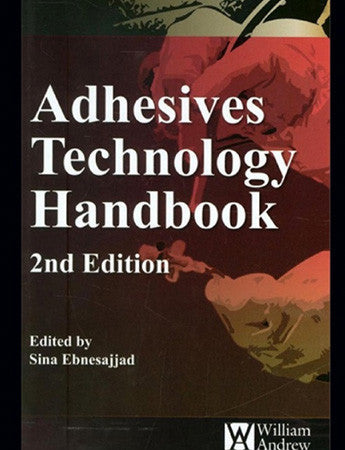This book offers an overview of the most important aspects and applications of additives for waterborne systems in diverse market segments. Wernfried Heilein helps to understand how additives work and elucidates all kinds of mechanisms in great detail. Furthermore, he dispels a lot of myths surrounding paint additives with an excellent combination of theory and practice. This enables a deep insight into all the different application areas for additives in waterborne paint systems.
Audience:
Formulators involved in developing, producing, and testing of waterborne coatings and paints for different applications and substrates including can and coil coatings, heavy-duty protective coatings, plastics coatings, wood coatings and architectural coatings.
2 Wetting- and dispersing additives
2.1 Modes of action
2.1.1 Pigment wetting
2.1.2 Grinding
2.1.3 Stabilisation
2.1.3.1 Electrostatic stabilisation
2.1.3.2 Steric stabilisation
2.1.3.3 Electrosteric stabilisation
2.1.4 Influences on formulation
2.1.4.1 Viscosity
2.1.4.2 Colour strength
2.1.4.3 Compatibility
2.1.4.4 Stability
2.2 Chemical structures
2.2.1 Polyacrylate salts
2.2.2 Fatty acid and fatty alcohol derivatives
2.2.3 Acrylic-copolymers
2.2.4 Maleic anhydride copolymers
2.2.5 Alkyl phenol ethoxylates
2.2.6 Alkyl phenol ethoxylate replacements
2.3 Wetting and dispersing additives in different market segments
2.3.1 Architectural coatings
2.3.1.1 Direct-grind
2.3.1.2 Pigment concentrates
2.3.2 Wood and furniture coatings
2.3.2.1 Direct grind
2.3.2.2 Pigment concentrates
2.3.3 Industrial coatings
2.3.3.1 Direct grind
2.3.3.2 Pigment concentrates
2.3.4 Printing inks
2.3.4.1 Direct grind
2.3.4.2 Pigment concentrates
2.4 Tips and Tricks
2.5 Test methods
2.5.1 Particle size
2.5.2 Colour strength
2.5.3 Rub-out
2.5.4 Viscosity
2.5.5 Zeta potential
2.6 Summary
2.7 Literature
3 Defoaming of coating systems
3.1 Defoaming mechanisms
3.1.1 Foam
3.1.1.1 Causes of foam
3.1.1.2 Types of foam
3.2 Defoamers
3.2.1 Composition of defoamers
3.2.2 Defoaming mechanisms
3.2.2.1 Defoaming by drainage/slow defoaming
3.2.2.2 Entry barrier/entry coefficient
3.2.2.3 Bridging mechanism
3.2.2.4 Spreading mechanism
3.2.2.5 Bridging stretching mechanism
3.2.2.6 Bridging dewetting mechanism
3.2.2.7 Spreading fluid mechanism
3.2.2.8 Spreading wave mechanism
3.2.2.9 Effect of fillers on the performance of defoamers
3.3 Chemistry and formulation of defoamers
3.3.1 Active ingredients in defoamers
3.3.1.1 Silicone oils (polysiloxanes)
3.3.1.2 Mineral oils
3.3.1.3 Vegetable oils
3.3.1.4 Polar oils
3.3.1.5 Molecular defoamers (gemini surfactants)
3.3.1.6 Hydrophobic particles
3.3.1.7 Emulsifiers
3.3.1.8 Solvents
3.3.2 Defoamer formulations
3.3.3 Suppliers of defoamers
3.4 Product recommendations for different binders
3.4.1 Acrylic emulsions
3.4.2 Styrene acrylic emulsions
3.4.3 Vinyl acetate based emulsions
3.4.4 Polyurethane dispersions
3.5 Product choice according to field of application
3.5.1 Influence of the pigment volume concentration (PVC)
3.5.2 Method of incorporating the defoamer
3.5.3 Application of shear forces during application
3.5.4 Surfactant content of the formulation
3.6 Tips and tricks
3.7 Summary
3.8 Literature
4 Rheology modifiers
4.1 General assessment of rheology modifiers
4.1.1 Market overview
4.1.2 Basic characteristics of the different rheological additives
4.2 Requirements for rheology modifiers
4.2.1 Rheology
4.2.2 Example of application
4.3 Ethoxylated and hydrophobically modified urethanes
4.3.1 Synthesis of HEUR
4.3.2 Associative properties of HEUR additives
4.3.3 From self-association to associative behaviour
4.3.4 Hydrophobic/hydrophilic equilibrium of waterborne coatings
4.3.5 Improved colour acceptance with HEUR
4.4 Alkali swellable emulsions: ASE and HASE
4.4.1 Synthesis
4.4.1.1 ASE
4.4.1.2 HASE
4.4.1.3 Interaction between binders
4.4.2 Thixotropy and HASE
4.5 Outlook
4.6 Literature
5 Substrate wetting additives
5.1 Mechanism of action
5.1.1 Water as a solvent
5.1.2 Surface tension
5.1.3 Reason of the surface tension
5.1.4 Effect of the high surface tension of water
5.1.5 Substrate wetting additives are surfactants
5.1.6 Mode of action of substrate wetting additives
5.1.7 Further general properties of substrate wetting additives/side effects
5.2 Chemical structure of substrate wetting additives
5.2.1 Basic properties of substrate wetting additives
5.2.2 Chemical structure of substrate wetting additives important in coatings
5.2.2.1 Polyethersiloxanes
5.2.2.2 Gemini surfactants
5.2.2.3 Fluoro surfactants
5.2.2.4 Acetylenediols and modifications
5.2.2.5 Sulfosuccinate
5.2.2.6 Alkoxylated fatty alcohols
5.2.2.7 Alkylphenol ethoxylates (APEO)
5.3 Application of substrate wetting additives
5.3.1 Basic properties of various chemical classes
5.3.2 Reduction of static surface tension
5.3.3 Possible foam stabilisation
5.3.4 Effective reduction in static surface tension versus flow
5.3.5 Reduction of dynamic surface tension
5.3.6 Which property correlates with which practical application?
5.3.6.1 Craters
5.3.6.2 Wetting and atomisation of spray coatings
5.3.6.3 Rewettability, reprintability, recoatability
5.3.6.4 Flow
5.3.6.5 Spray mist uptake
5.4 Use of substrate wetting additives in different market sectors
5.5 Tips and tricks
5.5.1 Successful use of substrate wetting additives in coatings
5.5.2 Metallic shades
5.6 Test methods for measuring surface tension
5.6.1 Static surface tension
5.6.2 Dynamic surface tension
5.6.3 Dynamic versus static
5.6.4 Further practical test methods
5.6.4.1 Wedge spray application
5.6.4.2 One spray path
5.6.4.3 Crater test
5.6.4.4 Drawdown
5.6.4.5 Spray drop uptake
5.6.5 Analytical test methods
5.7 Literature
6 Improving performance with co-binders
6.1 Preparation of co-binders
6.1.1 Secondary dispersions
6.1.1.1 Polyester dispersions
6.1.1.2 Polyurethane dispersions
6.2 Applications of co-binders
6.2.1 Co-binders for better property profiles
6.2.1.1 Drying time
6.2.1.2 Adhesion
6.2.1.3 Hardness-flexibility balance
6.2.1.4 Gloss
6.2.2 Co-binders for pigment pastes
6.3 Summary
6.4 Literature
7 Deaerators
7.1 Mode of action of deaerators
7.1.1 Dissolution of microfoam
7.1.2 Rise of microfoam bubbles in the coating film
7.1.3 How to prevent microfoam in coating films
7.1.4 How deaerators combat microfoam
7.1.4.1 Deaerators promote the dissolution or formation of small microfoam bubbles
7.1.4.2 How deaerators promote the dissolution of microfoam bubbles
7.2 Chemical composition of deaerators
7.3 Main applications according to binder systems
7.4 Main applications according to market segments
7.5 Tips and tricks
7.6 Evaluating the effectiveness of deaerators
7.6.1 Test method for low to medium viscosity coating formulations
7.6.2 Test method for medium to high viscosity coating formulations
7.6.3 Further test methods for microfoam
7.7 Conclusion
7.7 Literature
8 Flow additives
8.1 Mode of action
8.1.1 Mode of action in waterborne systems without co-solvents
8.1.2 Sagging
8.1.3 Total film flow
8.1.4 Mode of action in waterborne systems with co-solvents
8.1.5 Mode of action in an example of a thermosetting waterborne system with cosolvents
8.1.6 Surface tension gradients
8.1.7 Summary
8.2 Chemistry of active ingredients
8.2.1 Polyether siloxanes
8.2.2 Polyacrylates
8.2.3 Side effects of polyether siloxanes
8.2.4 Slip
8.3 Film formation
8.4 Main applications by market segment
8.4.1 Industrial metal coating
8.4.1.1 Electrophoretic coating
8.4.1.2 Waterborne coatings
8.4.2 Industrial coatings
8.4.3 Architectural coatings
8.4.3.1 Flat and semi-gloss emulsion paints
8.4.3.2 High gloss emulsion paints
8.5 Conclusion
8.6 Test methods
8.6.1 Measurement of flow
8.6.2 Measuring flow and sagging by DMA
8.6.3 Measuring the surface slip properties
8.7 Literature
9 Wax additives
9.1 Raw material wax
9.1.1 Natural waxes
9.1.1.1 Waxes from renewable raw materials
9.1.1.2 Waxes from fossilised sources
9.1.2 Semi-synthetic and synthetic waxes
9.1.2.1 Semi-synthetic waxes
9.1.2.2 Synthetic waxes
9.2 From wax to wax additives
9.2.1 Wax and water
9.2.1.1 Wax emulsions
9.2.1.2 Wax dispersions
9.2.3 Micronized wax additives
9.3 Wax additives for the coating industry
9.3.1 Acting mechanism
9.3.2 Coating properties
9.3.2.1 Surface protection
9.3.2.2 Gloss reduction
9.3.2.3 Texture and structure
9.3.2.4 Rheology control
9.4 Summary
10 Light stabilizers for waterborne coatings
10.1 Introduction
10.2 Light and photo-oxidative degradation
10.3 Stabilization options for polymers
10.3.1 UV absorbers
10.3.2 Radical scavengers
10.3.2.1 Antioxidants
10.3.2.2 Sterically hindered amines
10.4 Light stabilizers for waterborne coatings
10.4.1 Market overview
10.4.2 Application fields and market segments
10.4.2.1 Application specific product selection
10.5 Conclusions
10.6 Test methods and analytical determination
10.6.1 UV absorbers
10.6.2 HALS
10.6.3 Weathering methods and evaluation criteria
10.6.3.1 Accelerated exposure tests
10.6.3.2 Further evaluation criteria
10.7 Literature
11 In-can and dry film preservation
11.1 Sustainable and effective in-can and dry film preservation
11.2 In-can preservation
11.2.1 Types of active ingredients
11.2.2 Selection of active ingredients for the preservation system
11.2.3 Plant hygiene
11.3 Dry film preservation
11.3.1. Conventional dry film preservatives
11.3.2 New, „old” actives
11.3.3 Improvements in the ecotoxicological properties
11.4 External determining factors
11.5 Prospect
11.6 Literature
12 Hydrophobing agents
12.1 Mode of action
12.1.1 Capillary water-absorption
12.1.2 Hydrophobicity
12.1.3 How hydrophobing agents work
12.2 Chemical structures
12.2.1 Linear polysiloxanes and organofunctional polysiloxanes
12.2.2 Silicone resins/silicone resin emulsions
12.2.3 Other hydrophobing agents
12.2.4 Production of linear polysiloxanes
12.2.5 Production of silicone resin emulsions
12.2.5.1 Secondary emulsification process
12.2.5.2 Primary emulsification process
12.3 Waterborne architectural paints
12.3.1 Synthetic emulsion paints
12.3.2 Silicate emulsion paints
12.3.3 Emulsion paints with silicate character (SIL-paints)
12.3.4 Siloxane architectural paints with strong water-beading effect
12.3.5 Silicone resin emulsion paints
12.4 Conclusions
12.5 Appendix
12.5.1 Facade protection theory according to Künzel
12.5.2 Measurement of capillary water-absorption (w-value)
12.5.3 Water vapour diffusion (sd-value)
12.5.4 Simulated dirt pick-up
12.5.5 Pigment-volume concentration (PVC):
12.6 Literature
Authors
Index




